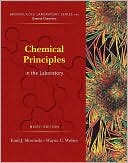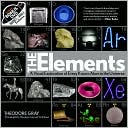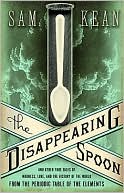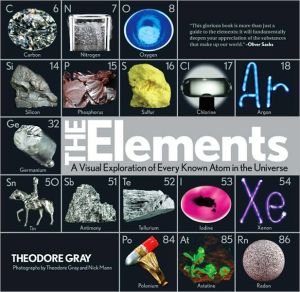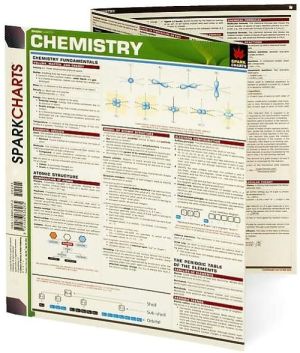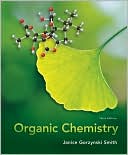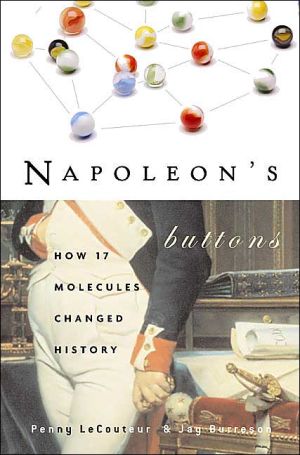Chemical Principles in the Laboratory
Search in google:
Succeed in chemistry with CHEMICAL PRINCIPLES IN THE LABORATORY, Tenth Edition! Clear, user-friendly, and direct, this lab manual provides you with the tools you need to successfully complete lab experiments and lab reports. Analyzing the data you observe in the lab sessions is easy with the manual's numerous Advance Study Assignments that give you extra practice with processing data through sample questions.
Experiment 1: The Densities of Liquids and Solids. Experiment 2: Resolution of Matter into Pure Substances, I. Paper Chromatography. Experiment 3: Resolution of Matter into Pure Substances, II. Fractional Crystallization. Experiment 4: Determination of a Chemical Formula. Experiment 5: Identification of a Compound by Mass Relationships. Experiment 6: Properties of Hydrates. Experiment 7: Analysis of an Unknown Chloride. Experiment 8: Verifying the Absolute Zero of Temperature'Determination of the Barometric Pressure. Experiment 9: Molar Mass of a Volatile Liquid. Experiment 10: Analysis of an Aluminum-Zinc Alloy. Experiment 11: The Atomic Spectrum of Hydrogen. Experiment 12: The Alkaline Earths and the Halogens'Two Families in the Periodic Table. Experiment 13: The Geometrical Structure of Molecules'An Experiment Using Molecular Models. Experiment 14: Heat Effects and Calorimetry. Experiment 15: The Vapor Pressure and Heat of Vaporization of a Liquid. Experiment 16: The Structure of Crystals'An Experiment Using Models. Experiment 17: Classification of Chemical Substances. Experiment 18: Some Nonmetals and Their Compounds-Preparations and Properties. Experiment 19: Molar Mass Determination by Depression of the Freezing Point. Experiment 20: Rates of Chemical Reactions, I. The Iodination of Acetone. Experiment 21: Rates of Chemical Reactions, II. A Clock Reaction. Experiment 22: Properties of Systems in Chemical Equilibrium'Le Ch'telier's Principle. Experiment 23: Determination of the Equilibrium Constant for a Chemical Reaction. Experiment 24: The Standardization of a Basic Solution and the Determination of the Molar Mass of an Acid. Experiment 25: pH Measurements-Buffers and Their Properties. Experiment 26: Determination of the Solubility Product of Ba(IO3)2. Experiment 27: Relative Stabilities of Complex Ions and Precipitates Prepared from Solutions of Copper(II). Experiment 28: Determination of the Hardness of Water. Experiment 29: Synthesis and Analysis of a Coordination Compound. Experiment 30: Determination of Iron by Reaction with Permanganate-A Redox Titration. Experiment 31: Determination of an Equivalent Mass by Electrolysis. Experiment 32: Voltaic Cell Measurements. Experiment 33: Preparation of Copper(I) Chloride. Experiment 34: Development of a Scheme for Qualitative Analysis. Experiment 35: Spot Tests for Some Common Anions. Experiment 36: Qualitative Analysis of Group I Cations. Experiment 37: Qualitative Analysis of Group II Cations. Experiment 38: Qualitative Analysis of Group III Cations. Experiment 39: Identification of a Pure Ionic Solid. Experiment 40: The Ten Test Tube Mystery. Experiment 41: Preparation of Aspirin. Experiment 42: Rate Studies on the Decomposition of Aspirin. Experiment 43: Analysis for Vitamin C. Appendix I: Vapor Pressure and Density of Liquid Water. Appendix II: Summary of Solubility Properties of Ions and Solids. Appendix IIA: Some Properties of the Cations in Groups I, II, and III. Appendix III: Table of Atomic Masses (Based on Carbon-12). Appendix IV: Making Measurements'Laboratory Techniques. Appendix V: Mathematical Considerations'Making Graphs. Appendix VI: Suggested Locker Equipment. Appendix VII: Introduction to Excel. Appendix VIII: Statistical Treatment of Laboratory Data.
